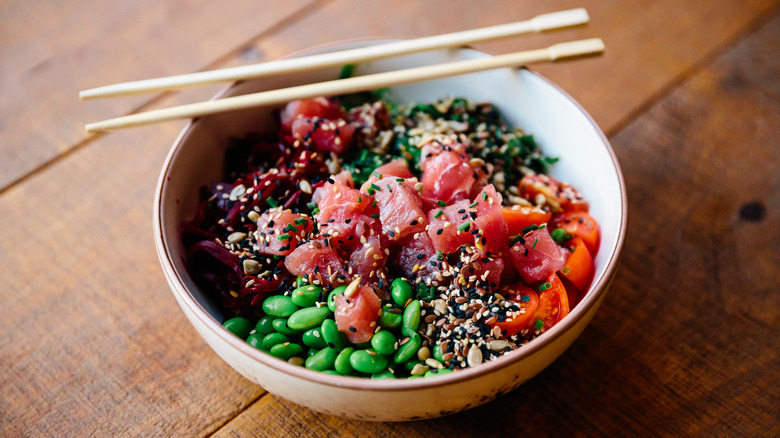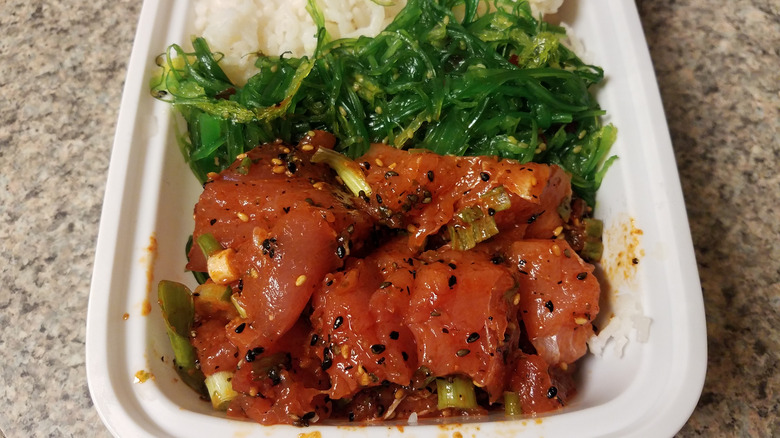Why Hawaii Is Known For Poke Bowls
From hot dogs to enchiladas, regional dishes in the U.S. take on a variety of forms. Yet, few bring a vibrant colorful pop quite like poke. Most associate the food with seafood — especially tuna, which is a popular option. The name itself translates to "chunk" in Hawaiian, meaning the food only entails a chopped foodstuff tossed in a marinade.
So, venture to a grocery store or restaurant on the archipelago, and you'll find poke in a dizzying array of forms. There's pipikaula made from dried beef, octopus called tako, shrimp, salmon, as well as ahi limu seaweed, all marinated in a flavorful seasoning. Typically, the food's prepared on a counter and sold by weight, accompanied with rice to craft a meal. Such qualities make it quite a different meal than a colorful salmon avocado poke bowl you'll find in the contiguous states. There's not an array of vegetable sides and condiments; Hawaiian-style poke instead prioritizes the marinated protein.
Turns out the poke bowls Hawaii is known for have drastically transformed from their origins. Originally enjoyed as a meal by fishermen, the dish later absorbed a range of influences — especially by way of Japan and Korea. During the 2010s, the food style became trendy elsewhere in the U.S., and altered into the now common form of customizable bowls.
Hawaiian poke fuses influences over centuries
Much like a ceviche, poke's roots lie in indigenous cooking at the hands of fishermen. The dish emerged whenever Hawaiians would bring in fish from the reef. They'd consume the animal fresh, sometimes directly with their fingers, while adding seasonings like sea salt, seaweeds called limu, as well as roasted candlenut. Although they'd also cut up the protein, too; a practice that was enjoyed as poke for centuries.
Arrival of Japanese immigrants in the 19th century shifted the protein of choice to ahi tuna, which remains the best tuna for poke. Seasonings like soy sauce, wasabi, and sesame oil also melded by way of Japan, influencing the poke marinade. Later Korean arrival also brought ingredients like kimchi, which remains a common poke topping. In the 20th century, the varying groups who passed through Hawaii left their influence on the dish. From Portuguese-style poke with dried cod to salmon carried over from North America, the definition of poke broadened.
It wasn't until the 1970s that poke became commonly enjoyed in Hawaii. Whipped up with aromatic marinades covering varying proteins, it's perfect as a takeaway. Served from plastic containers, it's a dish that's full of flavor, but one that nonetheless prioritizes convenience. Come the 21st century, such a template spread to East Asia, as well as the United States. So, with an intriguing Polynesian flair, Hawaii's poke bowls became a famed export.

